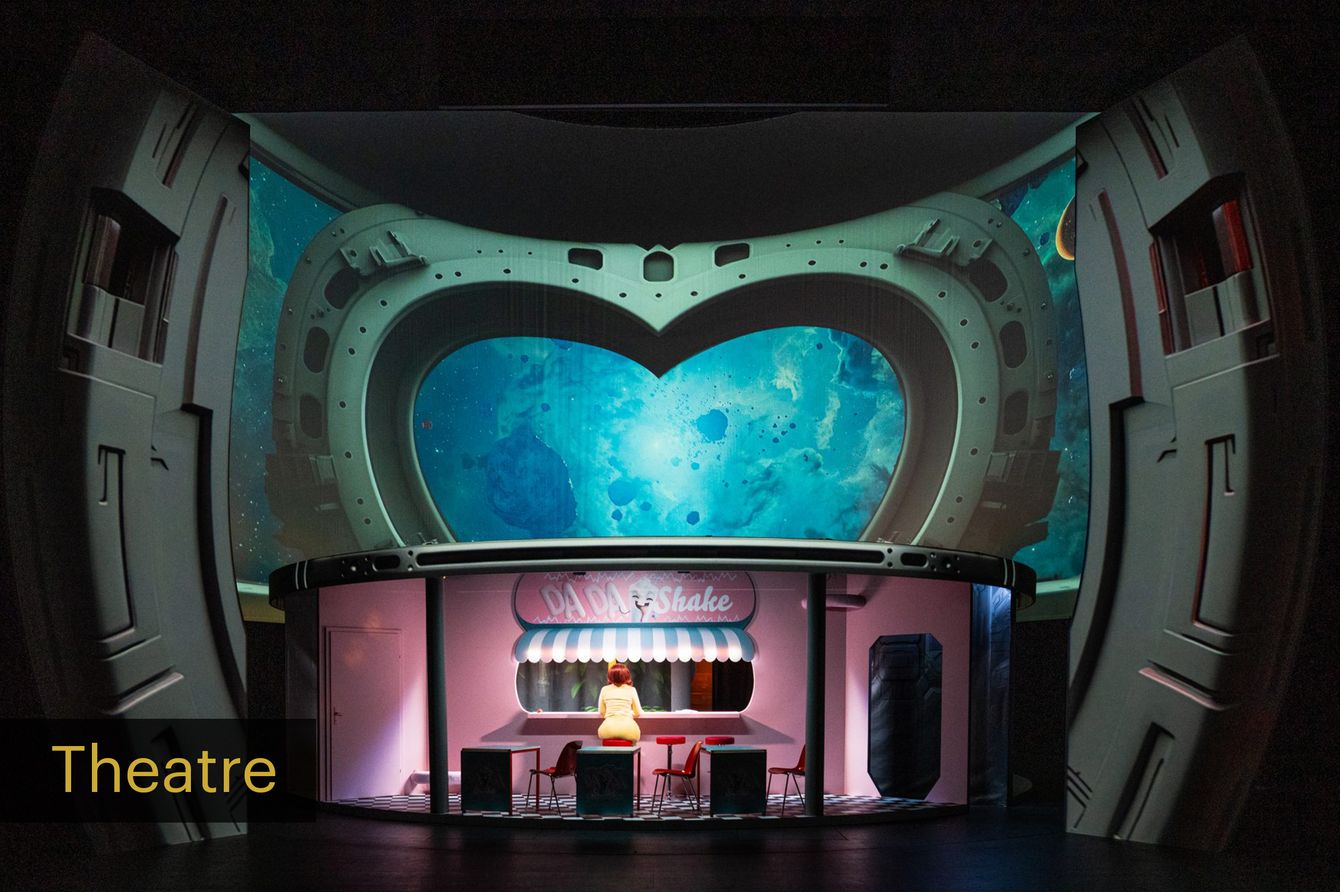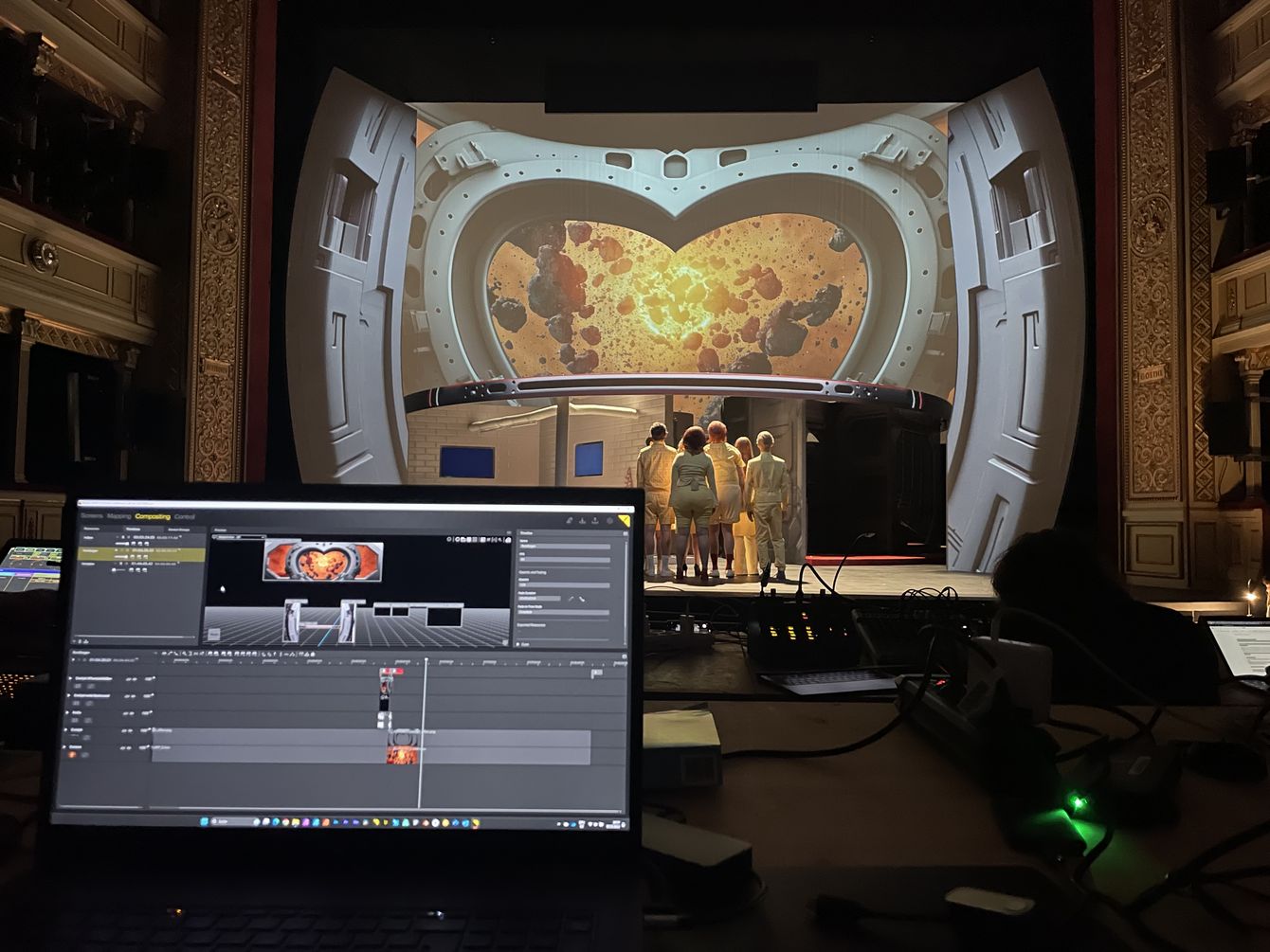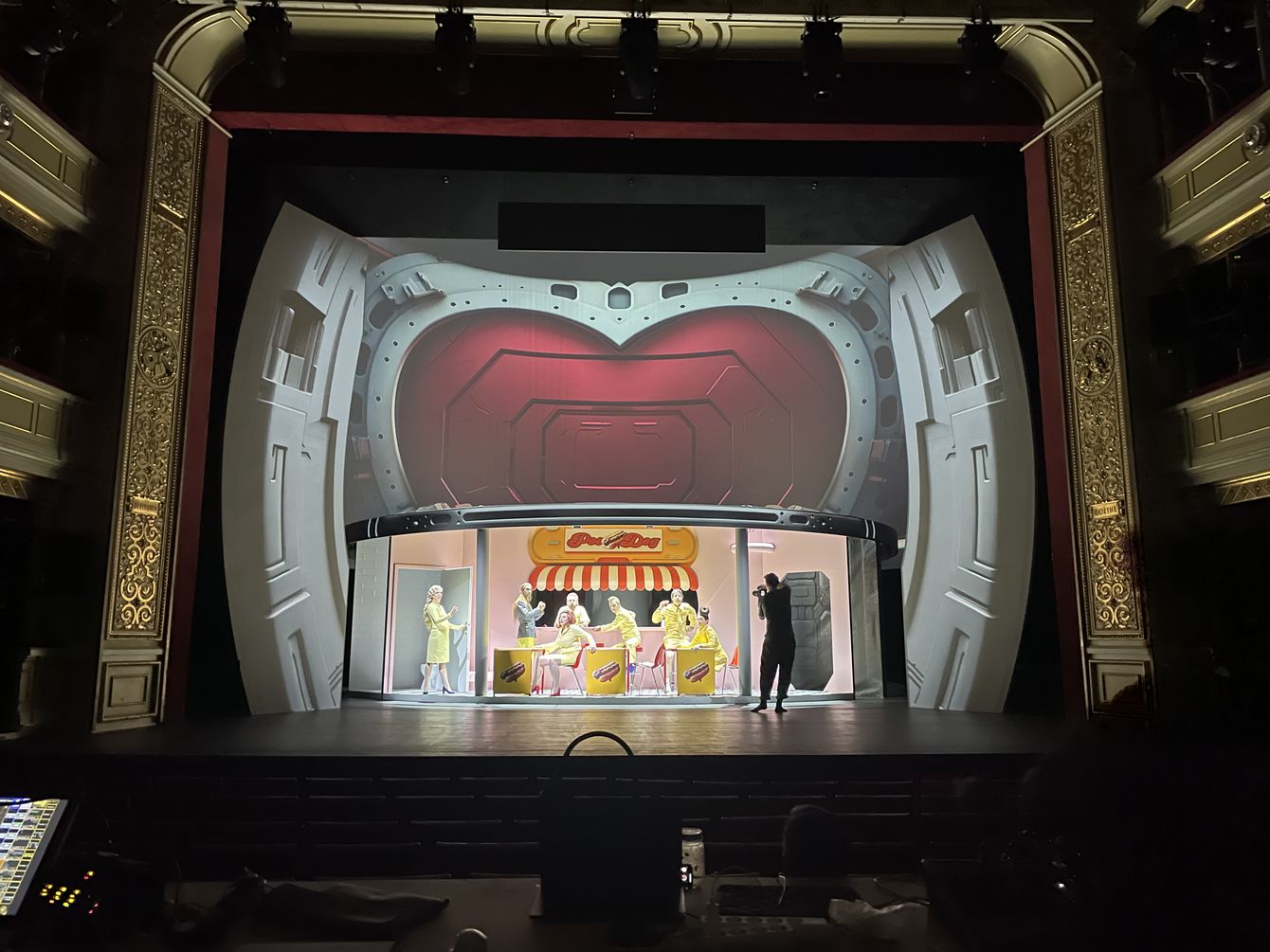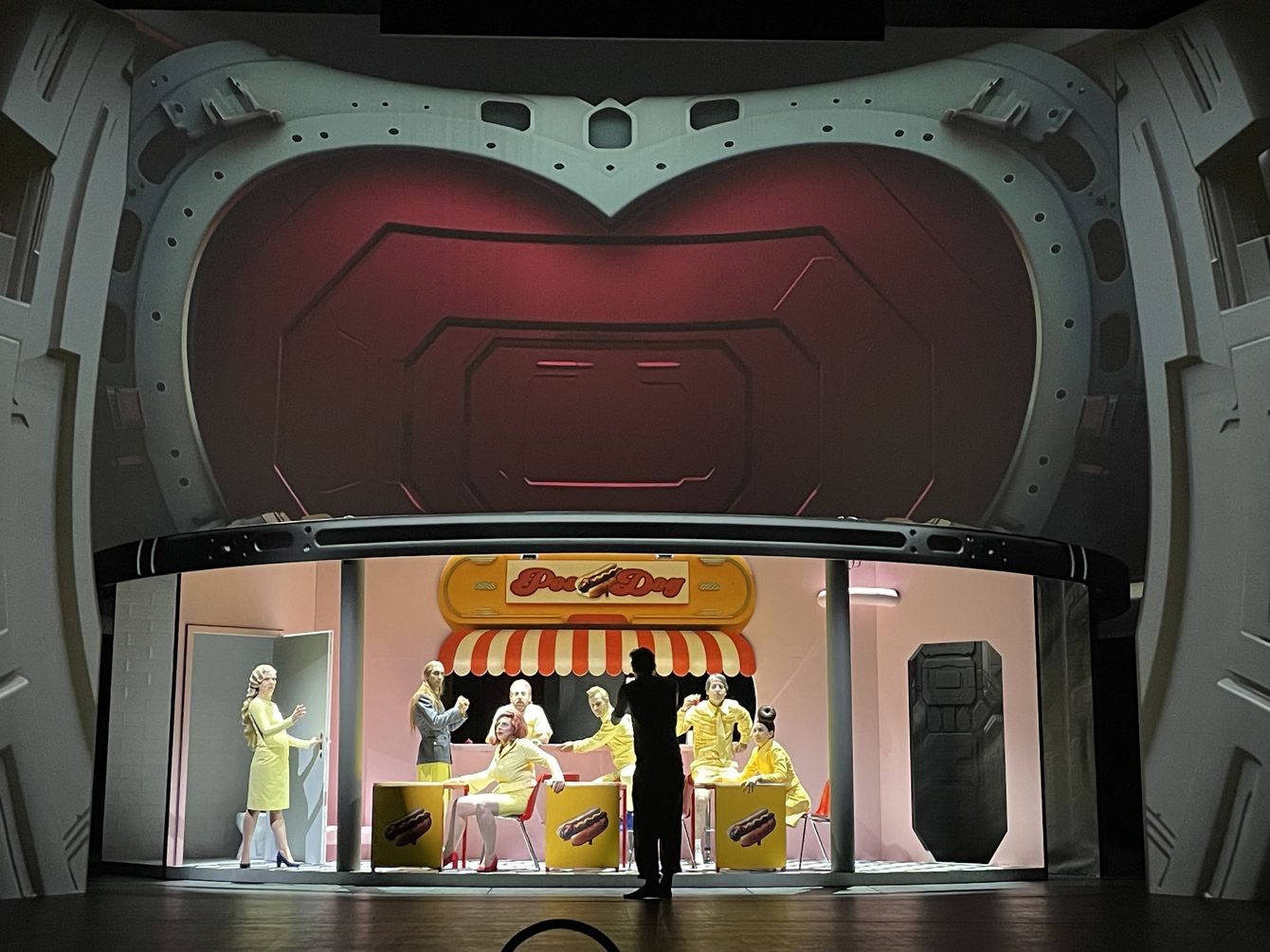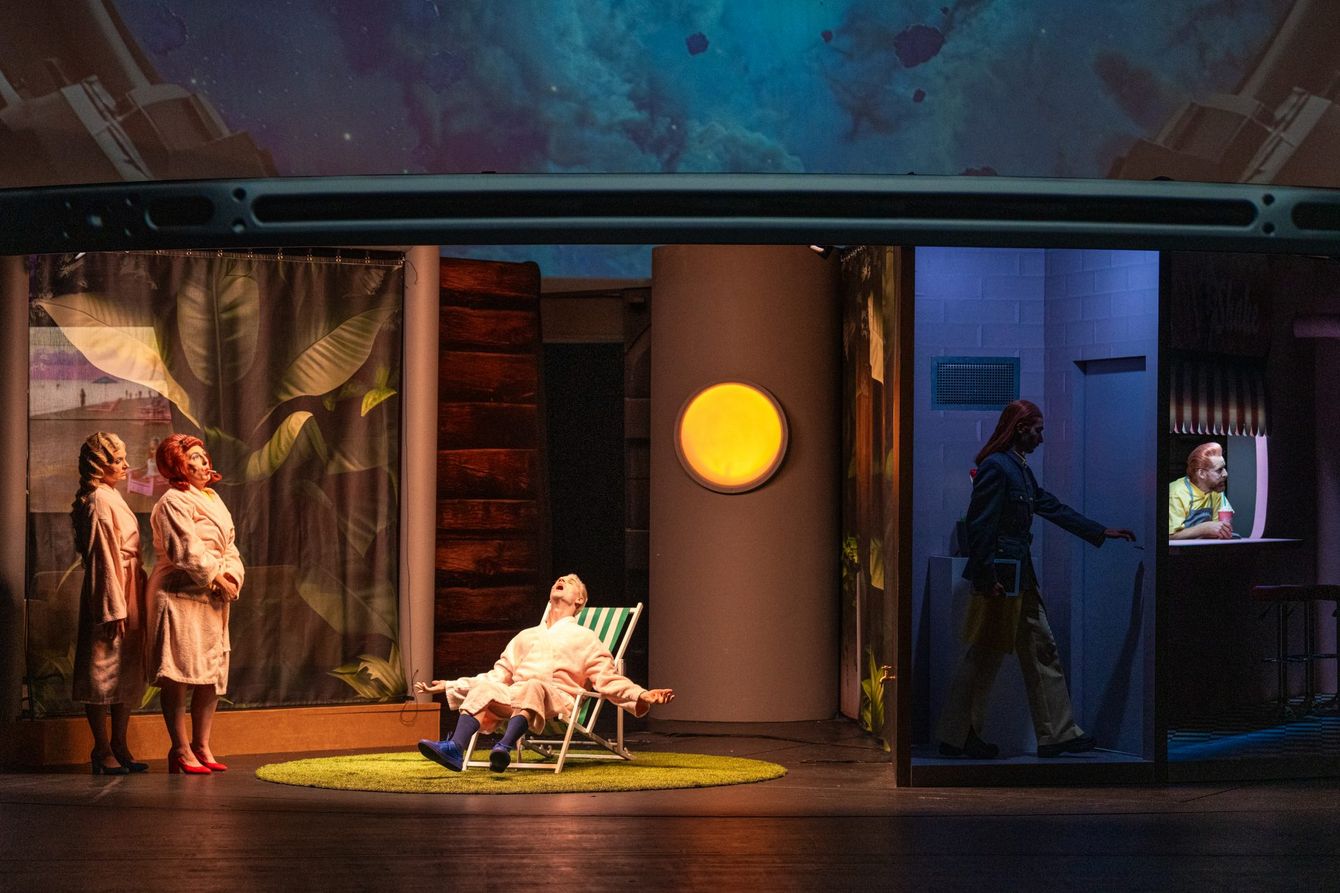Wallern a.d. Trattnach (Austria), 25th September 2024 – Sonne/Luft, the latest work by Nobel Prize-winning playwright Elfriede Jelinek, transformed Schauspielhaus Graz into the gleaming interior of a spaceship with a futuristic video set-up managed by PIXERA, AV Stumpfl’s multi-award-winning media server system for real-time media processing, compositing and management.
Sonne/Luft (“Sun/Air”), Jelinek’s new play, imagines the remnants of humanity, crowded aboard a spacecraft and monitored by a mysterious, ever-present AI, looking back at what was once Earth. In partnership with director Emre Akal and hip hop-inspired visual artists Mehmet & Kazim, Jelinek creates an almost entirely digital sci-fi world that transcends the analogue reality of the stage.
The play made its Austrian premiere from October to March at the Schauspielhaus theatre in Graz, Austria’s second city, where media technician Gerald Rotter relied on PIXERA to simplify and manage Sonne/Luft’s complex AVL requirements and bring its unsettling dystopian future to life.
“Sonne/Luft was a project I was very excited about because it allowed me to experiment a lot,” he says, outlining the challenges posed by the ambitious technical set-up. “To create the spaceship cockpit, we combined front projection and multiple screens with the a physical rotating stage, as well as separately projecting video content onto the stage backdrop. The projection mapping was a bit tricky and had to be redone for each performance, since the set-up was never 100% the same.”
At the Schauspielhaus Graz, Rotter used PIXERA to manage inputs and outputs (four each), in combination with Blackmagic video matrices (two Videohub 20x20), two Panasonic projectors (installed on lighting towers either side of the stage), and a grandMA2 lighting console. “We also used PIXERA's Videohub software for routing,” he adds, “plus Companion for easy routing of the Videohubs, [Panasonic] Geometry Manager for projector set-up, and PIXERA’s control interface controlling the projectors.” Rotter highlights PIXERA’s control tab, which turns the software into a user-friendly, versatile show control platform, as his favourite PIXERA feature: “this function has made many things much easier for me,” he says.
For Sonne/Luft, Rotter made liberal use of PIXERA’s control function, as he explains: “Initially, I focused entirely on compositing, and then control brought everything to life. PIXERA's control is brilliantly developed. For this show, I was able to use everything I had imagined. I created several timelines to simplify the workflow, and also let control manage the projectors and sound.”
Though he has been using PIXERA for some time, its user-friendliness and intuitiveness came in particularly handy on Sonne/Luft, on which he was working with a less experienced colleague, Rotter adds. “I have a colleague who supports me who had never dealt with video programming or video servers before, but she quickly got the hang of the system,” he says.
While he is also full of praise for the support offered by AV Stumpfl’s Austrian PIXERA team (in particular Harry Gladow, executive director for PIXERA, and customer care staff Benni Müller and Olli Kilian), for Rotter it’s the PIXERA platform itself that’s the real star of the show. “PIXERA is a brilliant system full of fantastic features,” he concludes. “It literally makes my life easier.”
Photo credits: Gerald Rotter / Lex Karelly (see file name)
PIXERA: pixera.one
Schauspielhaus Graz: www.schauspielhaus-graz.com
